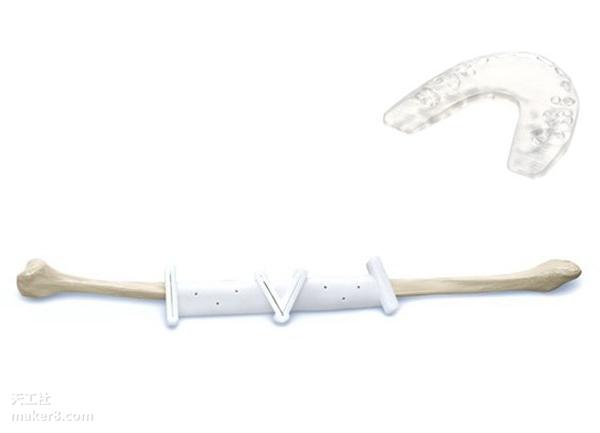Health care is one of the fastest growing proliferation of 3D printing technology areas. In fact, to date, 3D printing has become the dominant technology for manufacturing hearing aids and dental orthoses tailored to specific patients. And more and more doctors are beginning to use 3D printing technology to tailor implants and devices for craniofacial (CMF) reconstruction and knee and hip replacement. Of course, this is just the beginning of the application of additive manufacturing in the medical field. One of the goals of people is to achieve 3D printing organs and develop personalized medicines for different patients.
In the healthcare sector, Johnson & Johnson, one of the leading companies that are using 3D printing for medical product manufacturing, is the uncompromising Big Mac, with 250 subsidiaries in 57 countries and a total market capitalization. $323.8 billion. It is understood that the company's 3D printed orthopedic implants have appeared on the market a few years ago. In addition, Johnson & Johnson is also working with some well-known companies in the field of 3D printing, such as HP, Carbon, 3D Systems, Organovo and Materialise.
Recently, some industry media interviewed this giant to fully understand the application status and future plans of 3D printing technology in the company.

3D printed medical implants and devices
3D printing technology has been a prototype of the manufacturer's product design process. But a few years ago, DePuy Synthes, a subsidiary of Johnson & Johnson, began using the technology to customize medical devices and implants for specific patients.
“We have a product line called TRUMATCH in the orthopedic market that includes implants and surgical guides for CMF surgery, as well as osteotomy guides for knee joints, which are now personalized. Personalized devices often have complex geometries that can be delivered on demand according to the actual needs of CFM surgery,†said Joseph Sendra, vice president of manufacturing engineering and technology at Johnson & Johnson.
The TRUMATCH CMF uses the patient's CT scan data, which the clinical engineer can then create to create patient-specific implants and surgical guides. In addition to the implant's ability to match the patient's anatomy to reduce complications, the surgical guide can also help guide the surgeon to cut bone and accurately position the implant during surgery, allowing the physician to reduce uncertainty during the procedure. Sex and reduce the time of surgery. The complex geometry of these customized implants is often only possible with 3D printing.

Its TRUMATCH Knee also manufactures personalized knee surgery guides based on CT data from the patient's legs. This process was completed in cooperation with 3D Systems, and the two companies have established long-term relationships. All of the surgical guide design, communication with surgeons, and overall product lifecycle management are handled by a dedicated team of the company based in Indiana, USA. The designed electronic files are safely transmitted to 3D Systems 3D for printing and then sent back to DePuy Synthes for final assembly, sterilization and shipment.
Neckbandhearing Aid,Neckband Hearing Headphones,Neckband Hearing Headsets
Neckbandhearing Aid,Neckband Hearing Headphones,Neckband Hearing Headsets
Shenzhen Sunshine Technology Co.,Ltd , https://www.yatwinsz.com